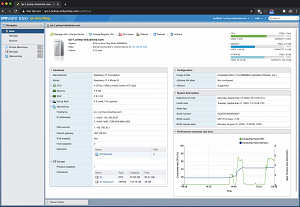How-To
ESXi on Arm
VMware has been teasing ESXi on Arm for years, and the community is excited to see that VMware has finally delivered on this promise, albeit in a Fling format.
VMware exec Kit Colbert recently announced the ESXi on Arm Fling. VMware has been teasing ESXi on Arm for years, and the community is excited to see that VMware has finally delivered on this promise, albeit in a Fling format.
For those unfamiliar, Flings are software created by VMware for the benefit of VMware customers; they are not official VMware products, and therefore aren't supported by the company. Still, they can be extremely useful. VMware occasionally uses Flings to gauge the interest of the VMware community for a particular technology, or to test a technology in the wild before it ends up in an official VMware product -- and judging by the chatter on Twitter, there is a lot of interest in this particular Fling.
ARM (previously an acronym for Acorn RISK Machine, later changed to Advanced RISC Machine) is a family of 32- and 64-bit multi-core processors which, due to their design, tend to provide outstanding performance and power efficiency. They were originally developed in the early 1980s and were used as coprocessor modules for the 6502B-based BBC Micro series of computers. Eventually, they found use in personal devices (e.g., cell phones and tablets), cameras, game consoles, and navigation systems.
 (source: VMware).
(source: VMware).
They also found great favor with hobbyists as single-board computers, the most popular of which being the Raspberry Pi. Recently, large public cloud providers began implementing servers using them due to their attractive processing power to power consumption efficiency, and enterprise computer hardware vendors such as Lenovo now have Arm servers for sale. In September 2020, Arm Holdings, the company behind Arm processors, was sold to Nvidia for $40 Billion.
VMware discussed a few of the use cases for ESXi on Arm, including vSAN witness nodes, Arm servers, and IoT like wind turbines; however, their initial focus will be on something that they recently announced that made my list of top takeaways from VMworld 2020: Project Monterey.
Project Monterey adds SmartNIC support to VMware Cloud Foundation (VCF). SmartNICs improve network performance and security, accelerate storage, and provide another layer of abstraction for the datacenter. This is all enabled by having ESXi running on a SmartNIC with an Arm processor.
Although SmartNICs are the initial use case for ESXi on Arm, VMware has targeted four platforms for this Fling: the Raspberry Pi 4, Ampere Computing eMAG-based servers from Avantek and Lenovo, and NXP LayerScape-based Edge/IoT platforms.
The ESXi Fling can be managed by vCenter Server 7 or from the ESXi Host Client. The ESXi Arm Edition Fling site has a screen capture of a Raspberry Pi 4 Model B being managed by vCenter Server. This shows all the information that you would see for an x86 server.
 [Click on image for larger view.]
[Click on image for larger view.]
Overall, the ESXi on Arm Fling is a long-awaited product that has been much anticipated by VMware's user base. I suspect that initially almost all the people downloading it will be using a Raspberry Pi to experiment with it. It will be interesting to see how VMware licenses and prices it and how VMware customers will implement it long-term.
About the Author
Tom Fenton has a wealth of hands-on IT experience gained over the past 30 years in a variety of technologies, with the past 20 years focusing on virtualization and storage. He previously worked as a Technical Marketing Manager for ControlUp. He also previously worked at VMware in Staff and Senior level positions. He has also worked as a Senior Validation Engineer with The Taneja Group, where he headed the Validation Service Lab and was instrumental in starting up its vSphere Virtual Volumes practice. He's on X @vDoppler.